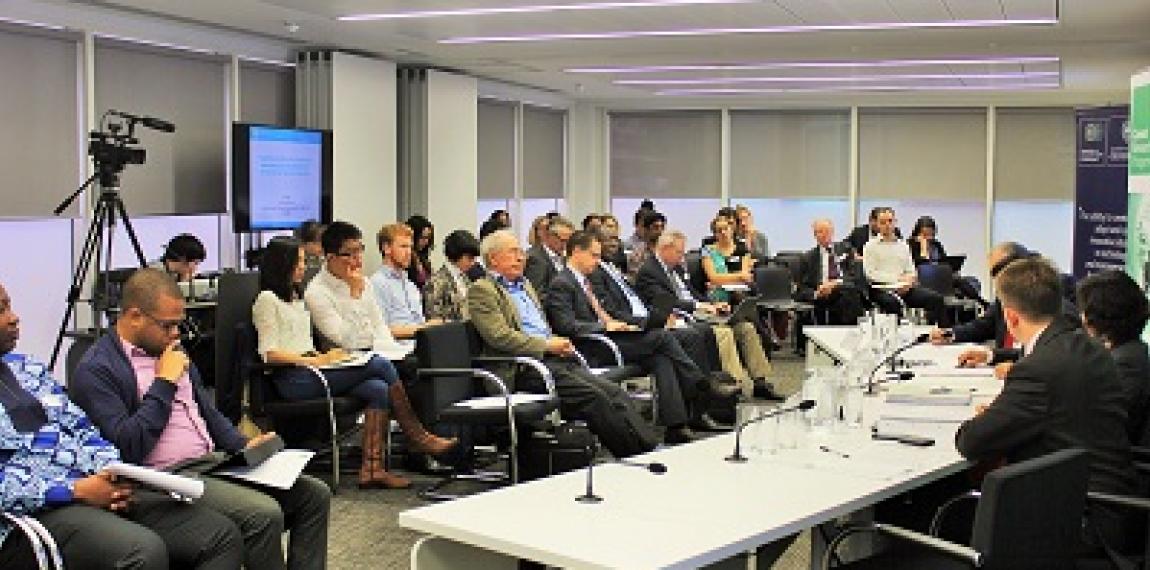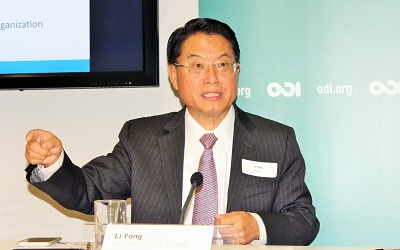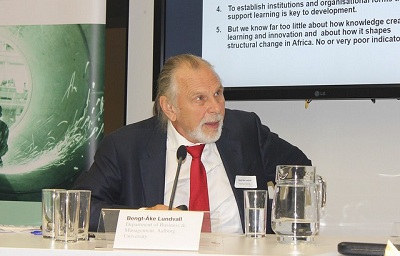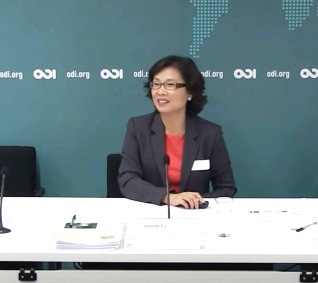
Published
DILIC End of Project High-level Conference
The Diffusion of Innovation in Low-Income Countries (DILIC) end of project high-level conference was held at the Overseas Development Institute (ODI) on Monday, 2nd November. This event, co-hosted by the TMCD and the DFID-ESRC Growth Research Programme (DEGRP), aimed to present the latest research findings of a three-year research project on Diffusion of Innovation in Low-Income Countries (DILIC), which was funded by ESRC-DFID and supported by UNCTAD, UNIDO and the Ghanaian government. The DILIC project fills in the knowledge gap by exploring determinants and transmission channels for effective innovation creation, diffusion and adoption in LICs under institutional, resource and affordability constraints.
The conference brought together over 80 participants from across research institutions, universities, international organisations, and the private sector, and invited a group of world-renowned experts in the field of innovation in low-income countries to share state of the art knowledge and insights. Speakers included Dr George Essegbey (Ghana), Prof Xiaolan Fu (Oxford), Prof Raphael Kaplinsky (SPRU), Prof Bengt-Ake Lundvall (Aalborg), Ms. Anne Miroux (UNCTAD), Prof Pierre Mohnen (UNU-MERIT), Dr Dirk Willem te Velde (ODI), Mr LI Yong (UNIDO), and Mr Sacha Wunsch Vincent (WIPO).
After intros from Prof Xiaolan Fu and ODI's Dirk Willem te Velde, the floor was given over to key note speeches from Li Yong, Director General of the United Nations Industrial Development Organisation (UNIDO), and Bengt-Ake Lundvall of Aalborg University.


While Li Yong focused chiefly on industrialisation, Lundvall spoke about informality and the important role of knowledge-based - as opposed to technological - innovation. Prof Xiaolan Fu, the Director of TMCD and the Principle Investigator of the DILIC project, elaborated main findings of the three years research. She summarized 10 things to know about innovation in Low-Income Countries (LICs).

- Innovation takes place everywhere, in both formal & informal sectors, based on adoption & adaptation.
- Knowledge external to the firm is a major source of innovation in LICs; much derives in the country, also from foreign countries.
- Firms in LICs use open innovation to overcome the various constraints.
- Innovation crucially depends on participation in value chains and the formation of regional production networks. South-South trade generates significant positive productivity gains.
- LICs generally lack adequate interaction between private firms and higher education institutions.
- Internet serves as an effective source of innovative ideas.
- There is a significant gender difference in innovation. Firms run by women entrepreneurs are less likely to introduce technological and novel innovation, but more likely to adopt marketing innovation.
- Education is crucial for innovation, especially for women CEO.
- Knowledge transfer from MNEs to local firms is not as strong as expected. This effect of Chinese MNEs is uneven.
- Innovation is often constrained & unsupported, whilst innovation support systems are often inadequate or unknown to firms.
Presentations followed from Pierre Mohnen on South-South trade integration, and Raphael Kaplinsky on 'Under the Radar' innovation. Last but not least, UNCTAD's Anne Miroux chaired a great panel session on policies for the promotion of innovation, speaking with CSIR-STEPRI's George Essegbey and WIPO's Sacha Wunsch-Vincent
For more information, please check the links below:
10 things to know about innovation in Low Income Countries (LICs)


